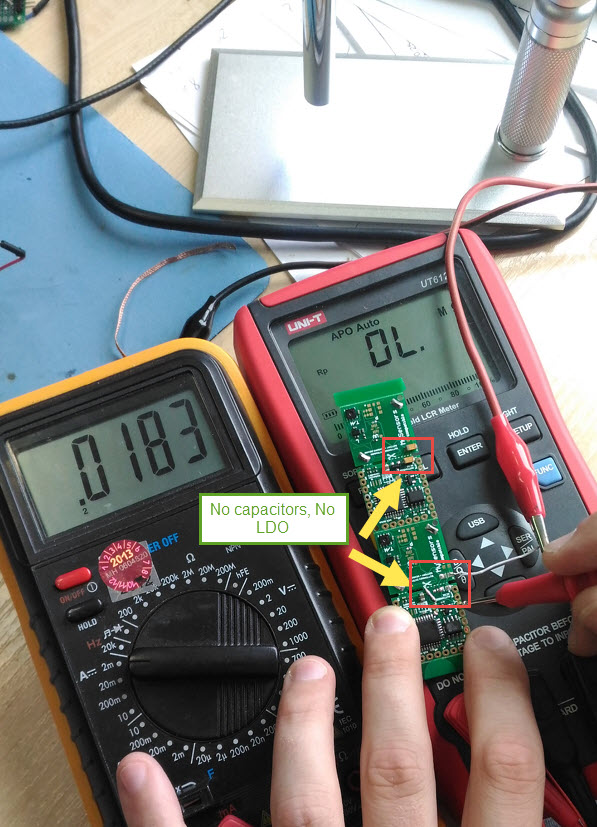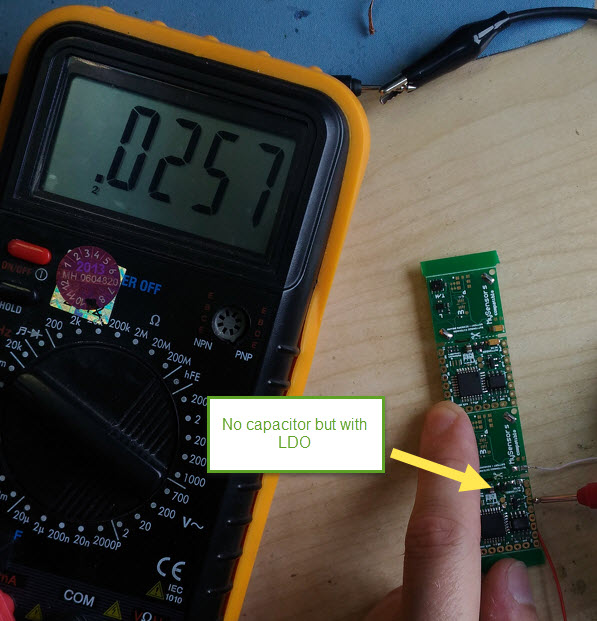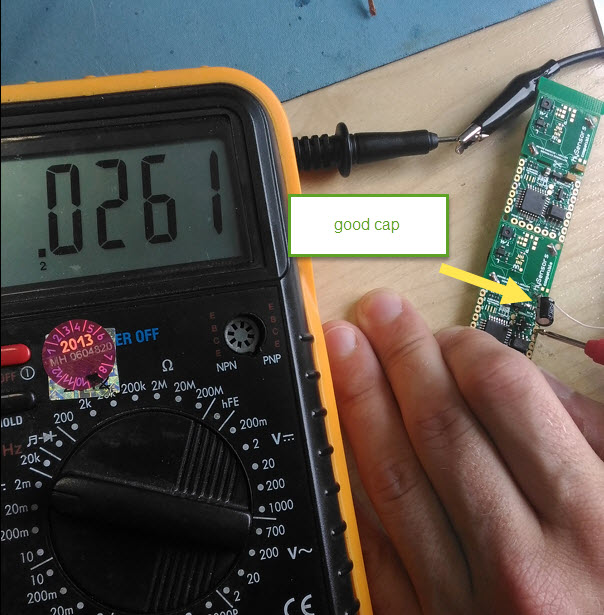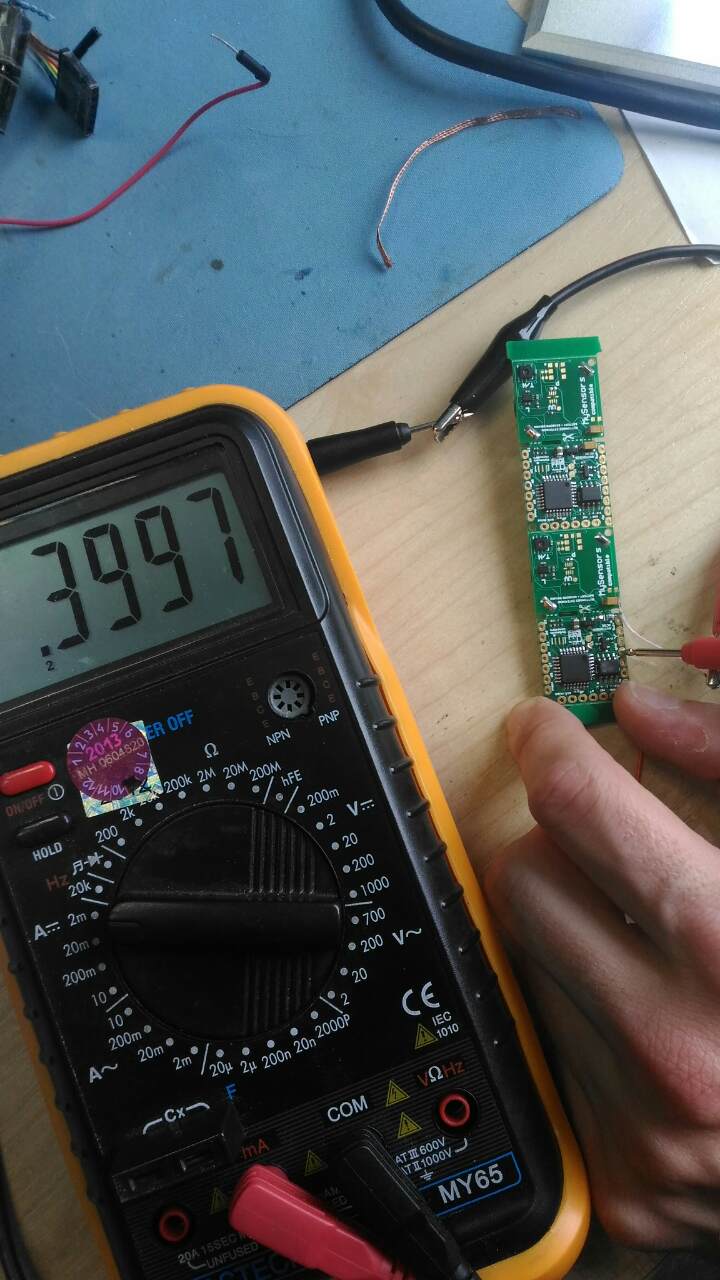💬 Button size radionode with sensors swarm extension
-
@alexsh1 said in 💬 Button size radionode with sensors swarm extension:
Something else is eating up a few milliamps
yes seems your board has bad capacitors. After rechecking many boards we found one eating a lot - 0.4 mA. Replacing caps fixed issue.



can you check?
-
@alexsh1 said in 💬 Button size radionode with sensors swarm extension:
Something else is eating up a few milliamps
yes seems your board has bad capacitors. After rechecking many boards we found one eating a lot - 0.4 mA. Replacing caps fixed issue.



can you check?
-
@alexsh1 said in 💬 Button size radionode with sensors swarm extension:
Something else is eating up a few milliamps
yes seems your board has bad capacitors. After rechecking many boards we found one eating a lot - 0.4 mA. Replacing caps fixed issue.



can you check?
-
@alexsh1 you can solder one or two capacitors ~50-200uf. But you should remove both because we do not know which of them is bad. Do not forget about polarity ;) Dot-key on the board means positive, so tantalum has positive key, but electrolitic capacitors has negative key.
-
@alexsh1 you can solder one or two capacitors ~50-200uf. But you should remove both because we do not know which of them is bad. Do not forget about polarity ;) Dot-key on the board means positive, so tantalum has positive key, but electrolitic capacitors has negative key.
-
combined capacitance of booth should be 100 --200 microfarads . It is input capacitors.
please try replacing themre:
I was suspecting EEPROM (CS pin with pull-up resistor?) to be a culpritnot pullups...
-
@yury what's your estimate of battery life based on a new consumption of about 25uA and the default sketch?
-
@Koresh thanks. It does not matter which caps, right?
I have a few 1206 100uF ceramic caps. They are not polarised and may be a good fit size wise@alexsh1 There is no problem to use your capacitors. 1206imp = 3216metric (type A) so they are fit perfect :+1:
About consumption... This is quite universal board. If you plan to use CR2032 battery it can be worth to omit LDO. You can do it using existing 0603 jumper footprint near right storage capacitor. -
@yury said in 💬 Button size radionode with sensors swarm extension:
@alexsh1 220 mAh(Duracell) / 0.025 (mA) = 8800 hrs = 366 days.
Not exactly - 25uA is a sleeping current.
There will be sending periods every 10 mins.
So I suppose the lifetime is less than a year -
@alexsh1 There is no problem to use your capacitors. 1206imp = 3216metric (type A) so they are fit perfect :+1:
About consumption... This is quite universal board. If you plan to use CR2032 battery it can be worth to omit LDO. You can do it using existing 0603 jumper footprint near right storage capacitor. -
@yury said in 💬 Button size radionode with sensors swarm extension:
@alexsh1 220 mAh(Duracell) / 0.025 (mA) = 8800 hrs = 366 days.
Not exactly - 25uA is a sleeping current.
There will be sending periods every 10 mins.
So I suppose the lifetime is less than a year@alexsh1 said in 💬 Button size radionode with sensors swarm extension:
@yury said in 💬 Button size radionode with sensors swarm extension:
@alexsh1 220 mAh(Duracell) / 0.025 (mA) = 8800 hrs = 366 days.
Not exactly - 25uA is a sleeping current.
There will be sending periods every 10 mins.
So I suppose the lifetime is less than a yearYes, it is sleeping time estimate. When it wakes up it compares first, like : if ( abs(d) > 50 ) send(msg_vis.set(VIS_LIGHT), true); so it might send or not.
But this is just example sketch and you are very welcome to create pull-request or make suggestion how to improve. -
@alexsh1 said in 💬 Button size radionode with sensors swarm extension:
@yury said in 💬 Button size radionode with sensors swarm extension:
@alexsh1 220 mAh(Duracell) / 0.025 (mA) = 8800 hrs = 366 days.
Not exactly - 25uA is a sleeping current.
There will be sending periods every 10 mins.
So I suppose the lifetime is less than a yearYes, it is sleeping time estimate. When it wakes up it compares first, like : if ( abs(d) > 50 ) send(msg_vis.set(VIS_LIGHT), true); so it might send or not.
But this is just example sketch and you are very welcome to create pull-request or make suggestion how to improve.@yury ok, you took the best case scenario (no messages as all) and if we take worst case scenario - sending every 10 mins in any case (suppose no if statement).
Then we take life time somewhere in between.
I think it make sense to take 18uA as a sleeping current removing the LDO from equation -
@alexsh1 You can fit juper (or any small wire, R10 on the schematic) or remove LDO at all and short top two pads.

@Koresh said in 💬 Button size radionode with sensors swarm extension:
@alexsh1 You can fit juper (or any small wire, R10 on the schematic) or remove LDO at all and short top two pads.

More neat solution is to remove LDO and solder 0 ohm resistor (R10). Looks nice
Ok, 18uA - this is more like it.
Thank you very much for helping to get it sorted. Now I need to understand why the consumption has gone when using Si1132@yury Did you test power consumption of modules with Si1132 please? I hope it was a bad soldering on my side
-
@alexsh1 said in 💬 Button size radionode with sensors swarm extension:
@yury said in 💬 Button size radionode with sensors swarm extension:
@alexsh1 220 mAh(Duracell) / 0.025 (mA) = 8800 hrs = 366 days.
Not exactly - 25uA is a sleeping current.
There will be sending periods every 10 mins.
So I suppose the lifetime is less than a yearYes, it is sleeping time estimate. When it wakes up it compares first, like : if ( abs(d) > 50 ) send(msg_vis.set(VIS_LIGHT), true); so it might send or not.
But this is just example sketch and you are very welcome to create pull-request or make suggestion how to improve. -
@alexsh1 said in 💬 Button size radionode with sensors swarm extension:
Did you test power consumption of modules with Si1132 please? I hope it was a bad soldering on my side
Could not find good code to send it to sleep. without it Si1132 was eating a lot...
-
@alexsh1 said in 💬 Button size radionode with sensors swarm extension:
Did you test power consumption of modules with Si1132 please? I hope it was a bad soldering on my side
Could not find good code to send it to sleep. without it Si1132 was eating a lot...
-
@alexsh1 You can fit juper (or any small wire, R10 on the schematic) or remove LDO at all and short top two pads.

@Koresh another alternative would be using Si1145 it is pin-for-pin compatible with Si1132 and
This low-power sensing family enables long battery life with standby less than 500 nA and an average power of as little as 1.2 uA with once per second real-time UV Index measurements.However, I still think that Si1132 can be working with the battery nicely. 0x18 register is a key:
The COMMAND Register is the primary mailbox register into the internal sequencer. Writing to the COMMAND register is the only I2C operation that wakes the device from standby mode.
The only question is how to put the sensor into the standby mode after all measurements are taken


